We had a look into the Coolaudio V3205 / Shanghai Belling BL3205. Now let´s take a look into an old BBD built by Matsushita (Panasonic)!
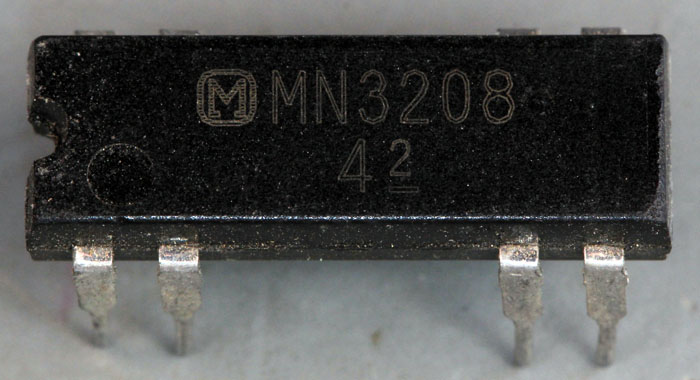
The MN3208 is a NMOS BBD with 2048 stages.

Interesting: The schematic in the datasheet looks very similar to the schematic in the datasheet of the Coolaudio V3205 / Shanghai Belling BL3205! Of course there are less stages but the symbols the letters and everything looks quite similar.
Coolaudio bought a lot of knowledge, patents and people for their vintage portfolio. It looks like they went shopping at Matsushita.
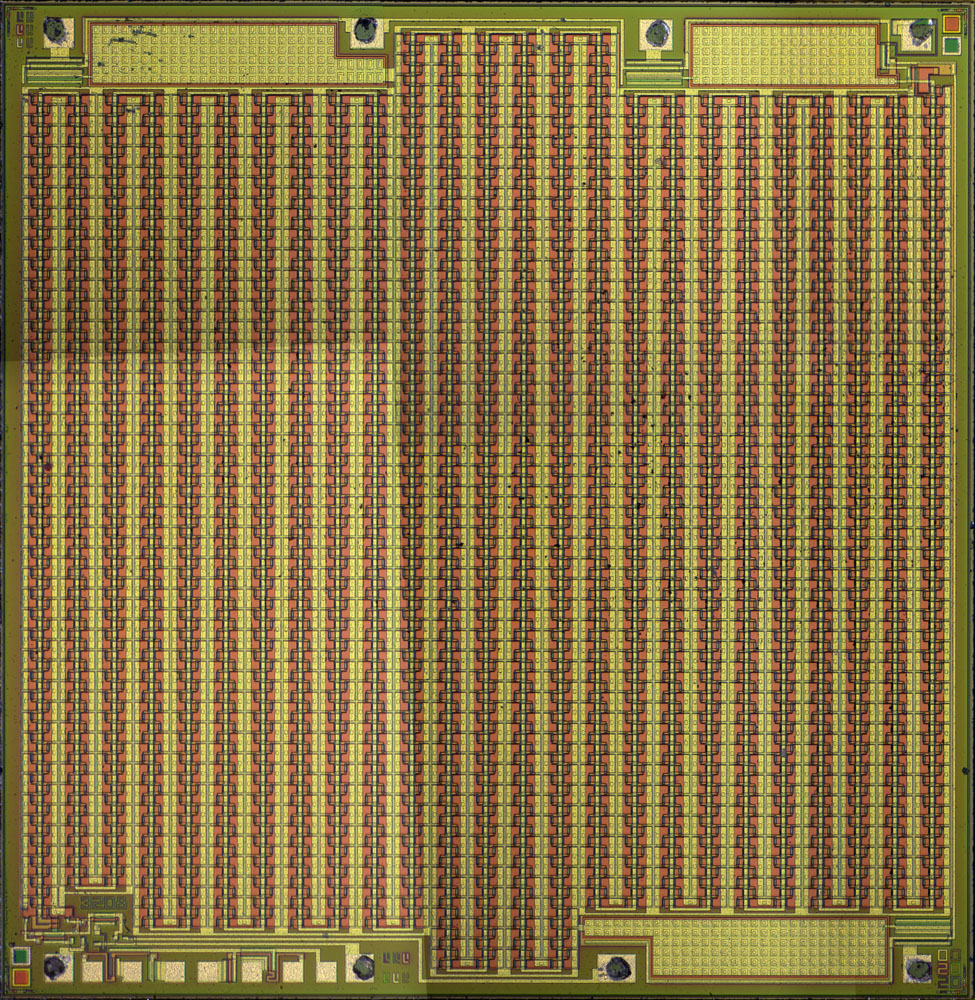
The die is 3,0mm x 3,0mm. The global structure is similar to the Coolaudio V3205 / Shanghai Belling BL3205 but it´s not exactly the same.

3208

...and some test structures.
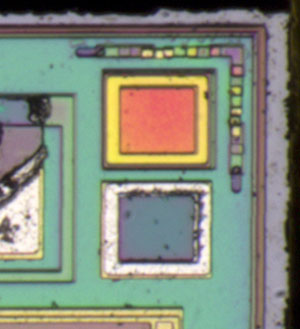
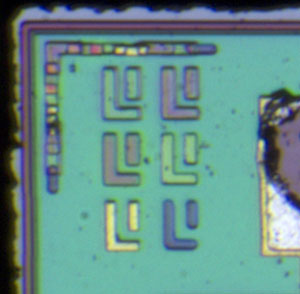
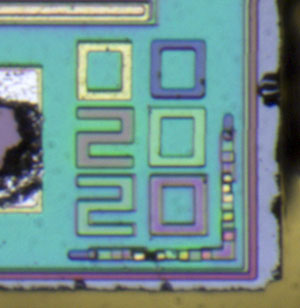
In the corners there are right angled lines that clearly show if there is a misaligned mask.
It looks like they used six masks and two of them were modified two times.

The test structure contains four transistors. All transistors share the same source potential that is connected to the substrate too. T1 and T2 share their gate potential and T3 and T4 share their gate potential.
T1 and T2 use the substrate in their active area. While T1 is equipped with a polysilicon gate T2 switches with a metal gate. In my view that is NMOS.
It looks like T3 and T4 are integrated on a purpel area. Probably that is PMOS. In the gate area of T3 there is kind of a notch.


The clocks CP1 and CP2 and the bias Vgg have the same big structures at their inputs as in the Coolaudio V3205 / Shanghai Belling BL3205. Probably protection against negative voltages.
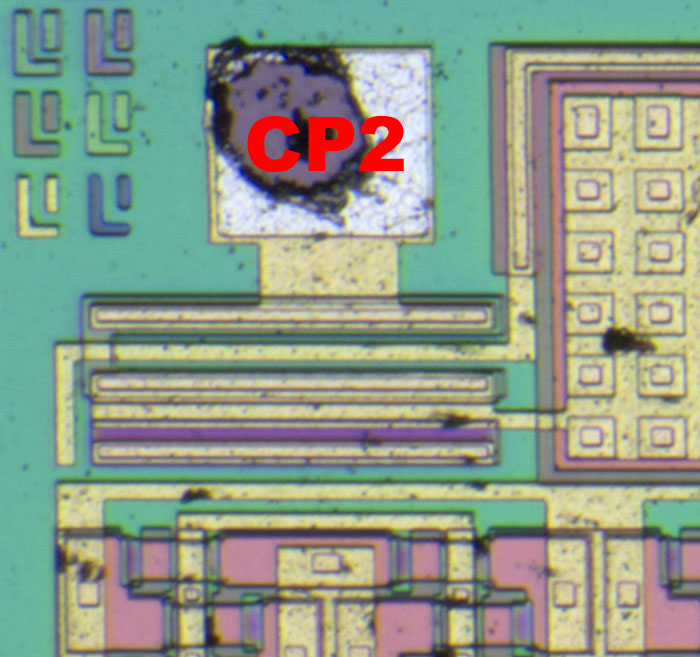
But if we take a closer look we find an additional ESD protection. Under the bondpad there is a C-shaped resistor. Under the resistor there is a metal structure which acts as a gate. Since the metal gate has a thicker oxide than the polysilicon gate the transistor is normally off. But with high voltages (ESD) the transistor is switched on and drains charge to the substrate.
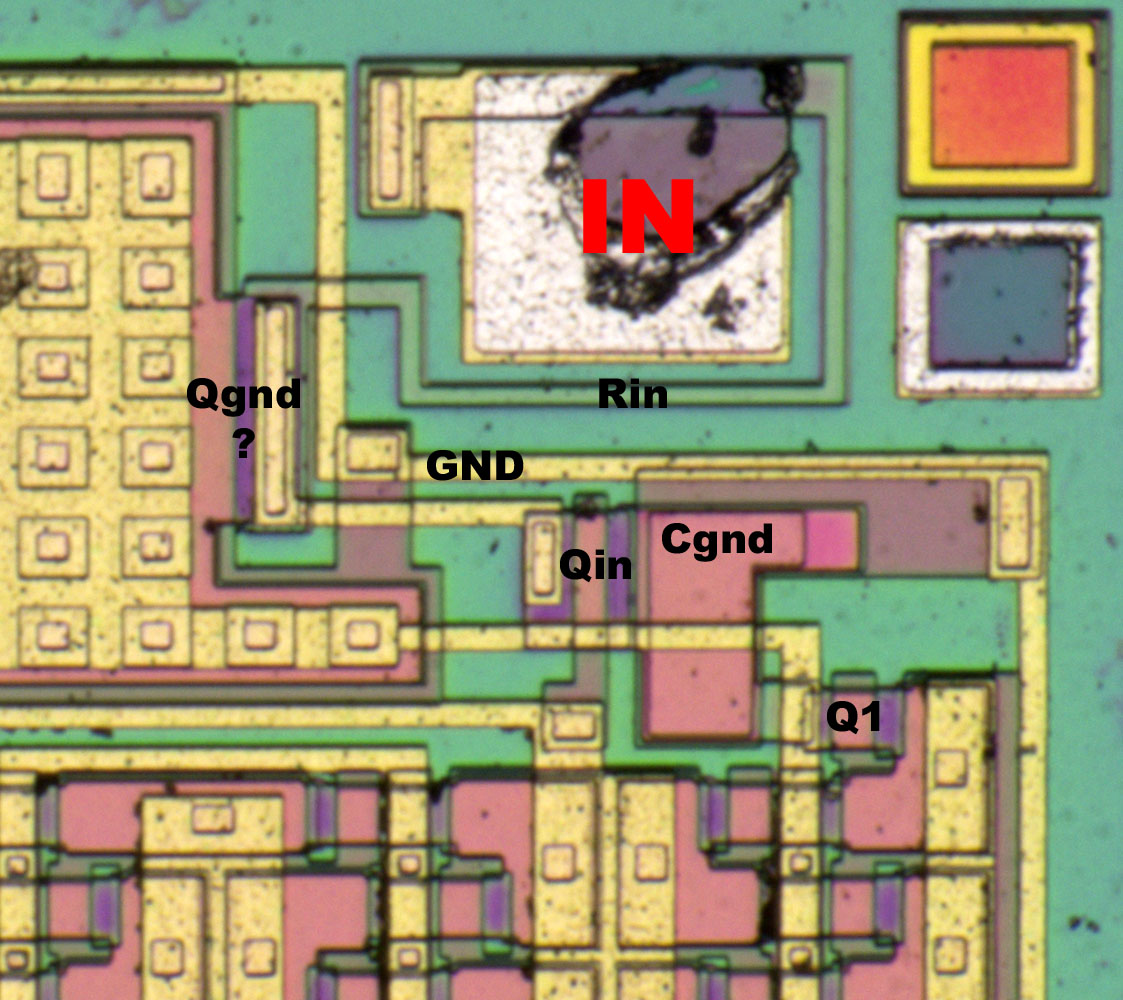
We know the input structure but here we have an additional part. Qgnd? is not mentioned in the datasheet. It looks like the end of the input resistor is placed near the GND plane of the big undervoltage protection structure of Vgg. The lower plane of the protection structure (which is connected to Vgg) is extended to this area what probably produces a MOSFET. I assume that gives us a pull down resistor at the input.
Cgnd looks like it easily could be modified to get more or less input capacitance.
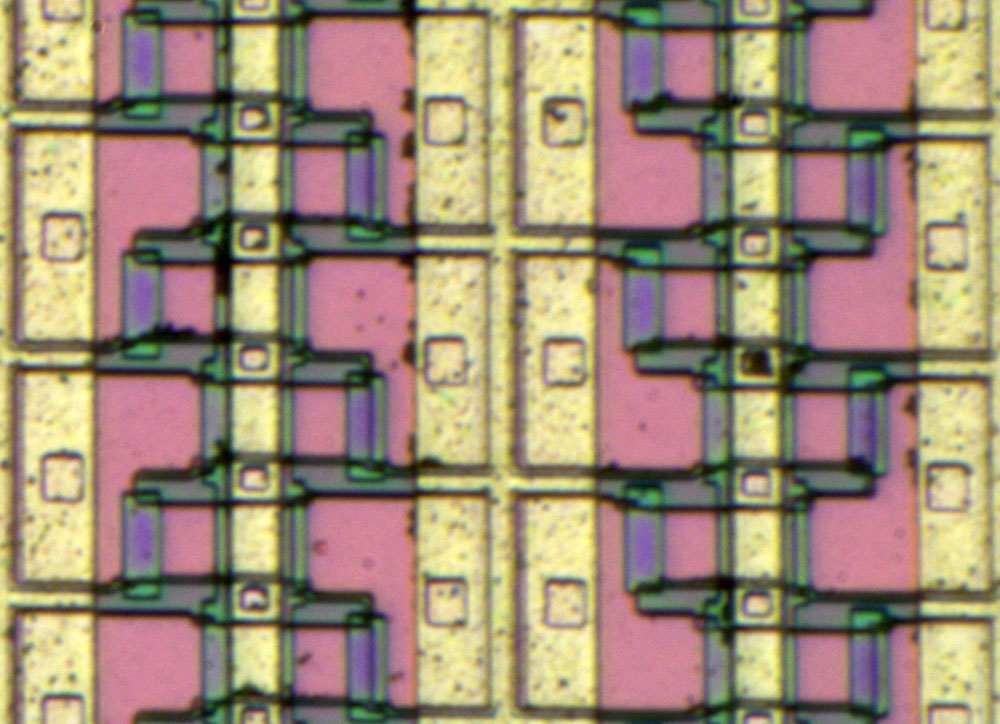
The BBD structure is similar to the Coolaudio V3205 / Shanghai Belling BL3205. The proportions are a little different but not very much.
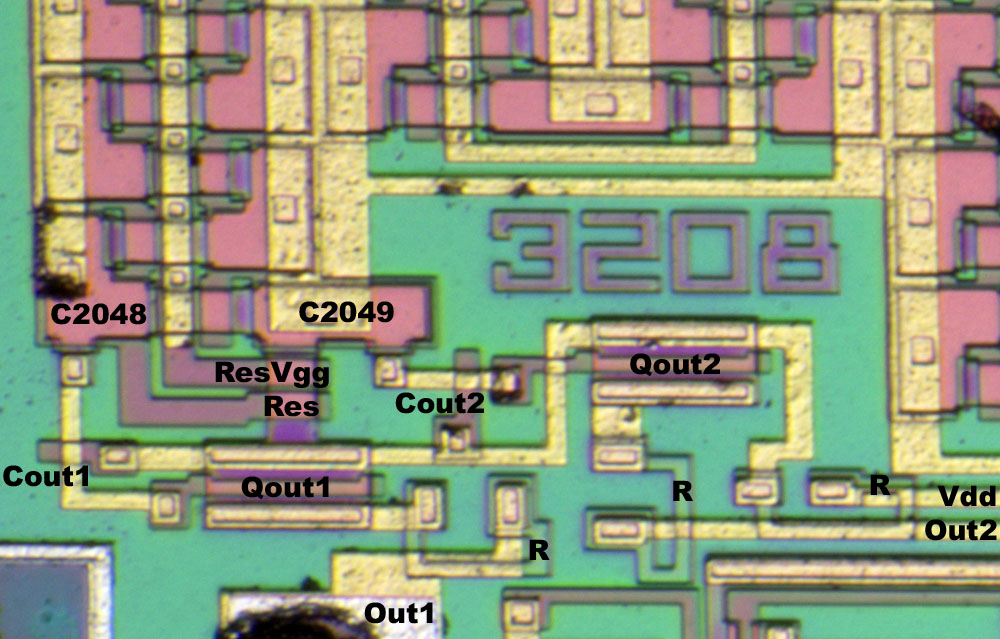
Here we have the two output driver connected to the stages 2048 and 2049.
I wasn´t perfectly clear at the Coolaudio V3205 / Shanghai Belling BL3205 (perhaps a little wrong

): You need these two outputs and you have to connect them because every second stage is empty due to the working principle of a BBD.
In the MN3208 the Res stage that disposes the charges to Vdd is clearly visible. It´s a cascode switch as every other switch in the BBD.
In the driver lines of the output transistors there are very small capacitors connected to Vdd which we haven´t seen in the Coolaudio V3205 / Shanghai Belling BL3205. I assume these capacitors reduces the risk of oscillations.
Some more pictures:
https://www.richis-lab.de/bbd02.htm 